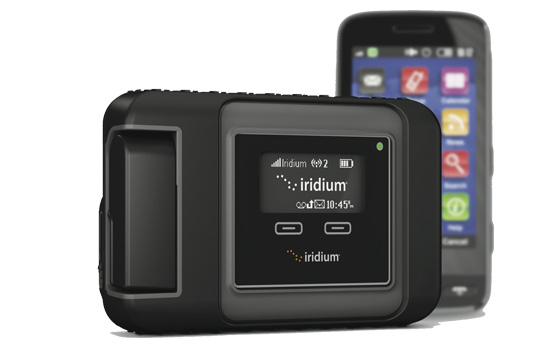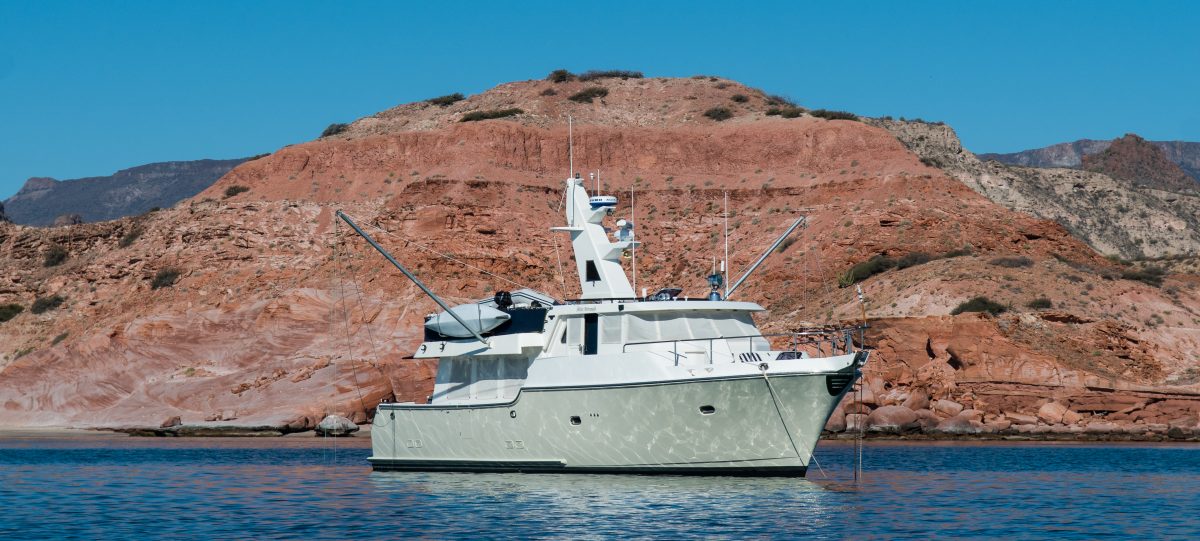Looking at our cruising budget, a surprisingly big chunk of it is dedicated to communications. I wrote earlier this summer about internet connectivity in Alaska (https://mvmissmiranda.com/2019/07/30/cellular-data-and-connectivity/), and here I review our current inventory of communication tools (with a few comments from Gwen).
Internet/Cellular Data
We have several Cellular data providers, described below:
- T-Mobile – OnePlus plan that when we started, claimed to provide unlimited data in the US, Canada and Mexico. Of course, since we signed up, they have placed constraints on the data, limiting the high speed data in Canada and Mexico, and we have heard, limited the amount of time that the service can be used in Mexico… likely not the 6-7 months we will be there. Reading the T-Mobile website, I see that they have revised their definition of “unlimited” data to be unlimited 2G data, rather than the unlimited High Speed data that was advertised when we signed up. And our cell phone carriers wonder why we hate them. Between our 3 lines and a couple of new phones, our bill is over $200/month.
- Verizon – Unlimited pre-paid JetPack plan. This has actually worked well for us at our home in Anacortes. For $65/month we get unlimited data at pretty good speed on our Verizon Mifi device. This is our only internet service. It does not work at all in Canada and Mexico, and we learned this summer that it works only in Ketchikan and Juneau Alaska.
- Google Project Fi- Probably the best plan for use internationally. Base rate is $20/month and then we get billed for data usage, topping out at an additional $60/month for up to 15 GB of high speed data. No problems in Canada, no problems (we’ve heard) in Mexico.
Satellite Data

- Iridium GO! is essentially a wifi hotspot that connects to the Iridium satellites and transmits data at, wait for it, 2400 bps. I have to go WAY back to my early computer days to remember serial modems that were that slow. On the plus side, it was relatively inexpensive to buy, and allows for email, text messaging, calling via your existing phone, and weather data retrieval. We bought ours from PredictWind (described below) and have an unlimited data plan at cost of about $120/month. We did use it a lot in Alaska for texting with Miranda and some other cruiser friends. There were a few times in fjord areas with high stone walls where it didn’t work and also varied with the level of the tides in Alaska, but neither of those issues will exist in Mexico. Our phone number on the Iridium does start with 82, so if you get a mysterious call beginning with that it could be us, so answer it!
- Garmin inReach is a similar, less capable device that rides on the same Iridium satellite network. It costs less than the GO! and data usage charges are about half that of the GO!, but we find the capabilities to be extremely limited – position tracking, which we like, and text messaging, which is barely adequate. It does, however, have an SOS capability, which we hope is a good safety feature. (Gwen did find many interesting stories on the Garmin website of real rescues that occurred for mariners using the Garmin SOS feature, although all were in US waters). The only reason we have it is that it is a CUBAR requirement for fleet communications. Data cost is about $65/month.

Weather Tools

- PredictWind Offshore is the tool we use in conjunction with the Iridium GO!. It allows us to plot our route and download weather data (GRIBs) that covers the route. We can see forecasted conditions, get routing recommendations, and look at different departure time options. It takes care of connecting with the GO! and retrieving the data. I find PredictWind to be an OK tool, but it is far from a comprehensive weather planning tool. It does a fine job of retrieving and displaying the GRIBs, but has almost no capabilities for retrieving the many NOAA forecast and analysis products that I use to supplement the binary data. In the next section, I will describe my solution for retrieving these products. This is costing us $250 annually.
Email Tools

- There are several ways to use email to retrieve the NOAA forecast products. NOAA has an ftp email server that you send a request to, and it sends back text or graphical data for the specific product requested. There is also a service called Saildocs that does something similar. The issue is sending and receiving email over a satellite connection. The Iridium GO! comes with a very rudimentary email solution that only works on IOS devices. We used it this summer in Alaska, and found it to be completely inadequate for any serious use. In looking for a better solution, I discovered that there is a niche industry that supports long range cruisers by providing email services customized for low bandwith connections, first using SSB radio, and more recently, using satellite data connections. One that I have started using is called UUPlus, which basically sets up an email server on your local computer, connects to the Iridium GO! and sends highly compressed messages that are decompressed and forwarded on their servers on the other side. It has a handy feature of being able to fetch multiple NOAA weather products at predetermined times so you don’t have to sit there and wait for the very slow satellite transfer. I really like it… but it is extremely pricey at around $30/month. We are giving it a 3 month trial on the way down to Mexico. The primary use underway will be for weather data, but it will also be useful for email communications when we are away from cellular and/or wifi service (which I assume will be fairly regularly). We can also use email to make blog posts, which otherwise require pretty high bandwidth connections.
I am afraid to add up the total costs here, but you can see that it is a pretty significant chunk of our cruising budget. Part of that is that we have all of the underway data sources as additions to our existing land-based services (e.g., T-Mobile, Verizon). We also have a fair amount of redundancy (e.g., both Iridium GO! and Garmin InReach, multiple cellular providers).
We will evaluate the services we actually use after we have some time in Mexico and likely eliminate some. For example, I could see eliminating the InReach services as soon as we finish CUBAR. I would also consider eliminating the PredictWind subscription, and using the email-based weather retrieval services in conjunction with one of several free GRIB viewers. I don’t think we will do anything about our multiple cellular plans.

Hi Larry! Thanks for the informative and fun read about your communication services and challenges. A couple of comments, especially as they relate to your future time in Mexico (where I’m spending more and more time).
1. The T-Mobile plans are all 2G speeds as far as I know. I’ve looked at changing to another T-Mobile plan (I’ve been a customer for years) at various times and have never seen them offer an unlimited high-speed data plan outside the US (of course, you’ve been able to buy temporary (7-14 day) “passes” for international travel, but those have their own significant limitations). 2G speeds in Mexico (at least in Jalisco) are completely useless. Texting now works after many people (including me) complained about messages regularly failing, but MMS messages regularly have issues even as recently as June when I was there.
2. I’ve been contemplating trying Google Fi on my next trip to Mexico (in October). I’ve heard/read good things about it and it has some advantages over my current international setup (see below).
3. You’ll find that many Mexicans use WhatsApp rather than SMS/texting because it is more reliable and works over WiFi. It is not unusual for people in Mexico to NOT have a data plan (or only have a very limited one) and to use WiFi exclusively. Most public places provide WiFi (almost always password protected–but usually just look on the chalk board or the menu for the password) so this works pretty well except when in motion. I’ve switched to a combination of WhatsApp (for Mexico and a few other countries) and Line (for much of Asia) and primarily use SMS when I’m in the US. I’d dump SMS completely if some of my tech-phobic friends would stop hanging on to it. 🙂
4. (as alluded to in comment #2) My current setup when I travel internationally is to get a local SIM card. I have a dual-SIM phone (a OnePlus 6T–NOT the T-Mobile branded version). I keep my T-Mobile SIM as the default for calls (WiFi calling works great for both incoming and outgoing calls), but switch my data to the local SIM. A 3GB, high-speed (4G is the most common) 30-day “plan” in Mexico with unlimited calling/texting/social-media-messenging costs about $15. Higher limit plans are available. I’ve never used more than 3GB in a month and I use my phone a LOT, but also use WiFi at restaurants, etc (partly because the cell signals don’t penetrate the buildings very well there–lots of steel-reinforced concrete construction). I always use TelCel since I’ve had the best luck with them (after trying several others). You can pick up a SIM at almost any of the TelCel authorized dealers (they are everywhere) and then “charge” the SIM at most OXXO stores (and probably some other places. As long as you use the SIM once every 6 months, it stays active. The side benefit is that you get to practice your Spanish every time you want to retrieve your current usage data (I think it is *131, but don’t quote me on that). Be sure to set your phone’s “data limit” setting to warn you when you are approaching the limit of your plan.
If I test out Google Fi on my trip in October., I’ll let you know how it works.
-Don Lewis
LikeLike
Hi, Don-
That is very helpful information. We too have WhatsApp accounts (recommended by other cruisers). The project Fi data has worked very well for me in Canada, would love to hear about your experience in Mexico when you get there. The local SIM is also a great option for us. We have a combo wifi/cellular router on the boat, so very easy to pop a SIM card in that (the Project Fi card is in there now).
See you in PV.
Larry
LikeLike
See you in PV! I’ll let you know about Project Fi after my October trip.
LikeLike
Wow, so complicated and costly! But Columbus made it so I’m sure you will do well with all your back-ups!💕🤗
Sent from my iPad
>
LikeLike
Oh, my. The tech part alone would do me in. Who would have “thunk” communications would be so expensive and so very necessary. Aunt jan
LikeLike
There is a simple and relatively free communications link to the internet that I used during my 14 years living off grid in Northern Alaska it is called Winlink ( https://www.winlink.org/ ). Actually I believe it was originally set up for sailors to be able to get the very information you speak of. I used it from my cabin to post on WordPress and email with my family 4,000 miles away. When I last used it it also had an extensive listing of free information sources for those that are currently (in the middle of no-ware.) I used it to get free medical information in real time from a doctor might be worth looking into. (*I do not get notifications if someone replies to my comments)
LikeLike
Hi, Pete-
Yes, that is one of several services that are used by/for sailors to do email and data communications over radio while at sea. Nice solution.
Larry
LikeLike